#Louisa Garrett Anderson
Explore tagged Tumblr posts
Text
Dr Flora Murray
Who was Flora Murray? Born in Dalton, Scotland, in May 1869, Dr Flora Murray was one of Britain’s early woman doctors and a prominent suffragette. She began her career as a probationer nurse at the London Hospital, Whitechapel, aged 21. And from there studied at the London School of Medicine for Women, the University of Durham and, eventually, the University of Cambridge.1 Together with her…
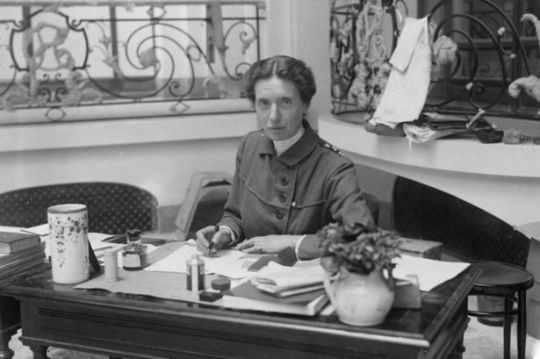
View On WordPress
1 note
·
View note
Text
Elizabeth Garrett Anderson (1836-1917), the first woman to qualify in Britain as a physician and surgeon, is a well-known name in the history of women’s rights. Lesser renowned but still important is her daughter, Louisa Garrett Anderson, who followed Elizabeth into the medical profession and Suffrage campaigns. Whilst her aunt, Millicent Fawcett (1847-1929), belonged to the Suffragist movement, Louisa joined the more militant Suffragettes.
#Me#Louisa Garrett Anderson#Suffragette#Suffragist#Flora Murray#Wspu#Nuwss#Doctor#Ww1#War#World War one
7 notes
·
View notes
Photo
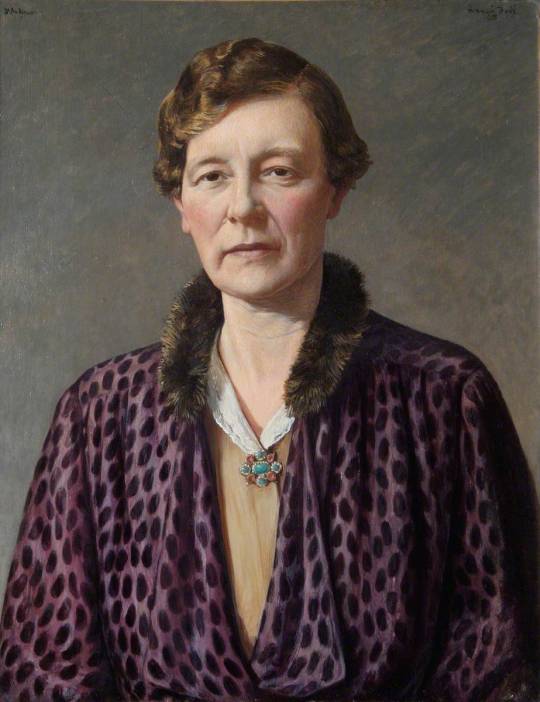
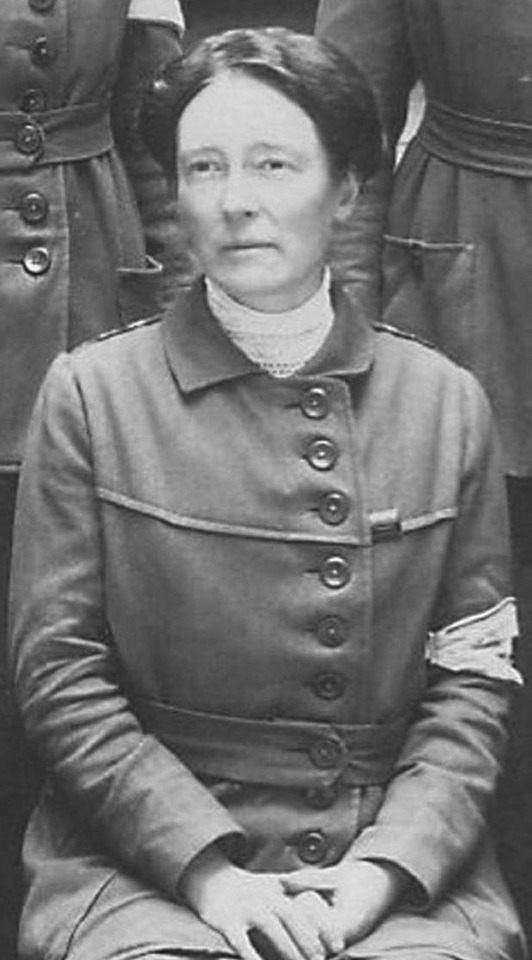
Louisa Garrett Anderson (deceased)
Gender: Female
Sexuality: Lesbian
DOB: 28 July 1873
RIP: 15 November 1943
Ethnicity: White - British
Occupation: Doctor, activist, suffragette
Note: When WW1 broke out, Anderson and Flora Murray founded the Women's Hospital Corps (WHC), and recruited women to staff it. Believing that the British War Office would reject their offer of help, and knowing that the French were in need of medical assistance, they offered their assistance to the French Red Cross.
#Louisa Garrett Anderson#lgbt history#women's rights#lesbian history#lgbtq#female#lesbian#1873#rip#historical#white#doctor#surgeon#activist#suffragette
80 notes
·
View notes
Text
Ilaria Tuti-COME VENTO CUCITO ALLA TERRA–Immagini, colori, suoni, sentimenti e fatti: quando le donne ricuciono ciò che la guerra lacera.
Ilaria Tuti-COME VENTO CUCITO ALLA TERRA–Immagini, colori, suoni, sentimenti e fatti: quando le donne ricuciono ciò che la guerra lacera.

View On WordPress
#Donne chirurghe#Flora Murray#Francia#gran bretagna#Louisa Garrett Anderson#Marina Cvetaeva#ospedali militari#Prima Guerra Mondiale#Suffragiste Inglesi
0 notes
Text
Author Spotlight: A. L. Lester
Today I’m happy to spotlight another author whose book we’ll get a chance to read in our book club! And with that comes a history lesson about heroic women, so read on to learn more!
The Fog of War and three books about women medics in the First World War

Thank you so much to Laura for having me here today for a guest post! I’m doing a bit of a blog-tour talking about the characters, settings and the history behind my new release, The Fog of War, and the bookclub is one of the stops. The book is the first of a new trilogy in my Border Magic Universe. It’s a sapphic, historical, paranormal, romantic mystery set in rural England in 1920. You’ll be able to find the other posts listed on my website as they come out this week.
The main characters in this book are Dr Sylvia Marks and her friend Lucille Hall-Bridges. They’ve both spent the First World War at the women’s hospital at Royaumont Abbey, in France. Firstly, let’s clarify… that’s hospitals staffed by women. Not hospitals FOR women.
At the beginning of the war, Dr Elsie Ingles, a Scottish doctor from Edinburgh, went to the War Office in London and offered them her services and that of some of her female colleagues. She was told to ‘go home and sit down’. She didn’t do that. Instead, she went to the French Red Cross and asked them if she could set up an entirely women-run hospital in France. They bit her arm off, basically, and gave her organisation the use of Royaumont Abbey, fifty miles outside Paris. They did excellent work, particularly in treating gas-gangrene, and all the positions from ambulance drivers to surgeons were filled by women. There’s an article about it here and there’s also a book. It was hard, dangerous and dirty work, from setting up the hospital in the almost derelict abbey—that lacked electricity when they moved in—to operating under fire.
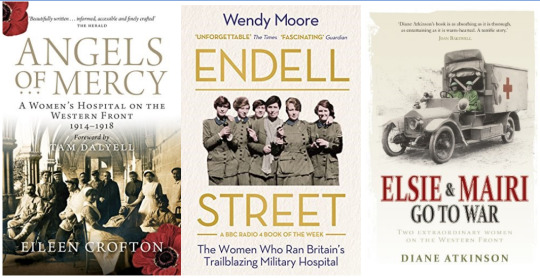
Sylvia made a brief appearance in an earlier novella of mine, based on a doctor my grandmother remembered from her Edwardian childhood. Writing a book with her as the main character meant I had to work out more about who she was; and giving her a war-work background seemed to come naturally.
I was also inspired by the Endell Street Military Hospital, run by Dr Flora Murray and Dr Louisa Garrett-Anderson (daughter of Elizabeth Garrett-Anderson, the first woman to qualify as a doctor in England). They ignored the British military machine entirely, went to the French Red Cross straight away and set up a small hospital in Paris…and the War Office were so impressed that they asked them to come home and run a five-hundred bed establishment in London. Again, the Women’s Hospital Corps pretty much staffed the place themselves, entirely with women, a large number of them Suffragists.
Flora Murray and Louisa Garrett-Anderson were also an inspiration for Sylvia and Lucy. As well as running the hospital together, they were partners and lived together until Louisa died in 1923. Her gravestone concludes WE HAVE BEEN GLORIOUSLY HAPPY and makes me cry when I read about it. You can see a picture of it in this article and read some more about them and the hospital.
Once I began reading around the subject I found it very hard to stop. I came across a book called Elsie and Mairi Go to War about two women who met at a motorcycling club in 1912 and then went to Belgium and ran a first aid post right behind the Belgian lines for most of the war. Elsie was thirty-two and a bit of an adventuress—she liked to be where the action was and got involved with the General Strike a few years later—and Mairi was twenty and much more placid-seeming in the biography. I liked her a great deal—after the war she set up a chicken farm with a dear friend and seems to have been settled and happy.
To sum up…I thought I’d write a book based in historical fact with some paranormal shenanigans thrown in (because I don’t seem to be able to write much without them tbf). And I did my due diligence because if I’m going to muck about with history and add in time-travel and slavering monsters from beyond a shimmering veil and all that, it seems a point of honour to get the history-bit right. And I ended up losing about two weeks of my life reading around the subject about all these fascinating women, at least two of whom were definitely together.
It’s a pleasure to have been invited to guest-post and tell you about them!
The Fog of War
Publisher: JMS Books LLC
Editor: Lourenza Adlem
Release date: 14 Aug 2014
Word Count: 50,000 words
Genre: Sapphic, found-family, historical, paranormal romantic mystery set in 1920s England.
Content Warning: Mention of domestic violence.
The quiet village of Bradfield should offer Dr Sylvia Marks the refuge she seeks when she returns home from her time in a field hospital in France in 1918. However, she is still haunted by the disappearance of her ambulance-driver lover two years previously ,and settling down as a village doctor is more difficult than she realised it would be after the excitement of front-line medicine. Then curious events at a local farm, mysterious lights and a hallucinating patient’s strange illness make her revisit her assessment of Anna’s death on the battlefield.
Lucille Hall-Bridges is at a loose end now her nursing work is finished. She felt useful as a nurse and now she really doesn’t know what to do with her life. She hopes going to stay with her friend Sylvia for a while will help her find a way forward. And if that involves staying at Bradfield with Sylvia…then that’s fine with her.
Will the arrival of Lucy at Bradfield be the catalyst that allows both women to lay their wartime stresses to rest? Can Sylvia move on from her love affair with Anna and find happiness with Lucy, or is she still too entwined in the unresolved endings of the past?
The first in the Bradfield trilogy, set in the Border Magic universe.
Buy : Buy from Publisher : Add on Goodreads : Find on author-website
About A. L. Lester
Writer of queer, paranormal, historical, romantic suspense, mostly. Lives in the South West of England with Mr AL, two children, a badly behaved dachshund, a terrifying cat, some hens and the duckettes. Likes gardening but doesn't really have time or energy. Not musical. Doesn't much like telly. Non-binary. Chronically disabled. Has tedious fits.
Facebook Group : Twitter : Newsletter : Website : Link-tree for everywhere else
29 notes
·
View notes
Text
muses that need more tlc, either interactions or opens. * is what i’m using to mark muses i need to write opens for. this also. mostly for my own reference unless you all are particularly interested
nino quincampoix *
aya drevis *
callum brodie *
celeste wright *
jurgen leitner
maggie short *
meriwether st. claire *
oliver cho
sarah carpenter *
merry *
lucky *
fauna
aneesa
farrah
ashlyn morgenstern
courtney morgenstern
viveca *
azumi fujita
erin greene *
cat chandler
jt forbes
ted logan *
jackson jekyll *
spectra vondergeist *
agatha of woods beyond
fionnula o’riley
buddy *
lyndsay *
violet nightshade
brigid tenenbaum
andrew ryan
diane mcclintock *
jasmine jolene *
elizabeth comstock
ella of frell *
persephone *
cordelia chase
jenny calendar
nancy drew *
annie edison
albert (mtap)
mei (mtap) *
sonia (mtap) *
remington *
marci forrester *
haru yoshioka *
bonnie applebottom *
granny applebottom *
elsie odair *
holland march *
bailey clarke
ellen *
rikki patil *
zinda blake
valerie geronimo
parvati holcomb *
atlas neredras
larianni
sten *
alexander king
august
emmaline wood
jade faust
mary lou walden
nadir khan *
bunny blanc *
raven queen *
erika
monica
lucy
melanie
marie
rosa
sonia magnolia
bobbi morse
cressida
dahlia lombard *
lidia posada
sancho alvarado *
sarah lyons *
clive dove *
katia anderson
emmy altava *
hershel layton *
garrett *
arden mcnamara *
claudia valentine
heather summers *
james whelan *
zhang jun
keats *
luke rutherford nolan
padme rutherford nolan
martin rutherford *
louisa julien *
mortimer allegri *
petra balboa
riley lynch *
robert woolf *
seraphim perrine *
tarot talbot *
viraj kaur *
abigail lockwood
dylas *
frey
illuminata *
ami mizuno *
rei hino *
bowie campbell
eleanor tate
johnny gat *
ben ravencroft
beau wilcott
bianca rivera *
claire parker *
daisy bright *
duke bright *
delilah *
jonas palmer *
rebecca jeffries *
skylar kohrs *
bertrand baudelaire
jerome squalor *
ara fusilli
dusty hogg *
kayleigh wintercrest
misty waters *
sancho paco panza
jakob horne *
ola song
hana
say’ri
panne
selkie *
orochi *
lorena thress *
maya torres
mack *
riza hawkeye *
gary galavant *
allison cooper *
kitty *
laura palmer *
emma pillsbury *
sadie oakley
tina cohen chang *
eudora patch *
rose blythe *
paul matthews *
m. gustave *
carina escobar
santos bergeron
elyse waldorf
pepper ortega *
karen
kathy
bloody mary *
nerissa *
dani clayton *
rebecca jessel *
willy wonka *
eleanor vance *
katarina bishop
roxy morton
marta cabrera *
elle woods
3 notes
·
View notes
Text
FATHER’S DAY
The death of Lucille Ball’s father at an early age had a great impact. Throughout the four situation comedies built around her, the “Lucy” characters had mothers, but references to their fathers was rare. Here’s a tribute to the precious few dads found in the Lucyverse!
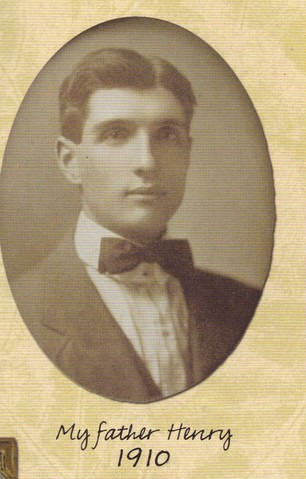
Henry “Had” Durrell Ball (1887-1915) ~ Father of Lucille Ball and Fred Ball.

Desiderio Alberto Arnaz y Alberni II (1894-1973) ~ Father of Desi Arnaz and grandfather of Lucie Arnaz and Desi Arnaz IV. Desi Jr. is now the father of two.
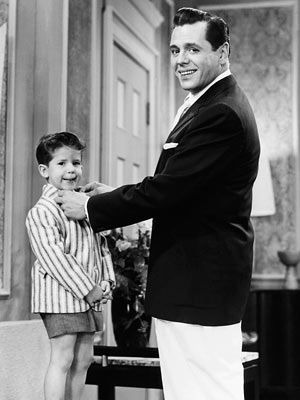
Ricky Ricardo (aka Ricardo Alberto Fernando Ricardo y de Acha aka Enrique Alberto Fernando Ricardo y de Acha III) ~ Father of Ricky Ricardo Jr. (Keith Thibodeaux). Actually, Ricky’s son was played by 8 actors over the course of the series.

In “Return Home From Europe” (ILL S5;E26), Ricky insists that he is not the father of baby Cheddar Chester!
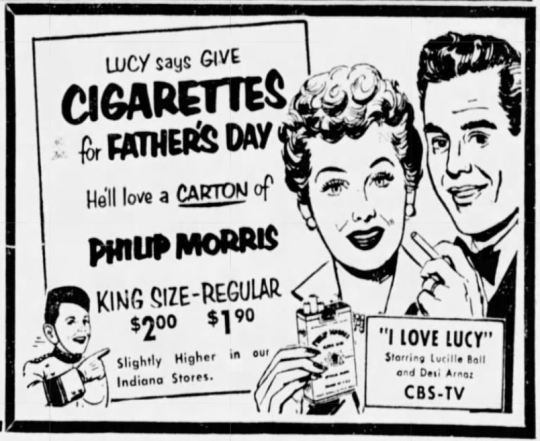
Below are all the fathers on “I Love Lucy”!
But first, a (Father’s Day) word from our sponsor!

Will Potter ~ Father of Ethel Mertz. Besides Ricky himself, Will Potter (Irving Bacon) is the only father of the main characters on “I Love Lucy.” Although all four have living mothers (two of whom are characters on the show), only Ethel’s father is alive and well and appears on screen in “Ethel’s Hometown” (ILL S4;E16).
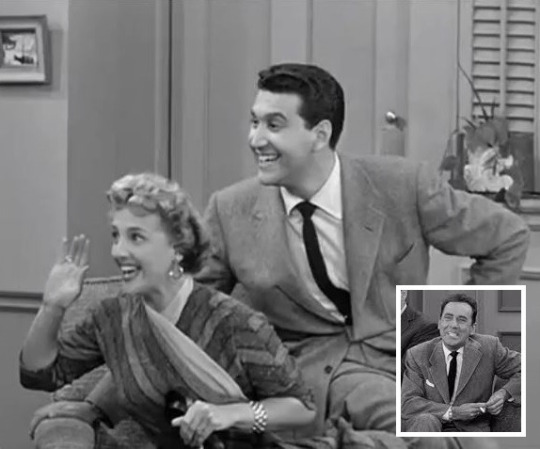
Charlie Appleby ~ Father of Stevie. Charlie makes two appearances on the series, although each time he is played by a different actor: Hy Averback played him in “Baby Pictures” (ILL S3;E5) and George O'Hanlon (inset photo) in “Lucy and Superman” (ILL S6;E13).

Harry Munson ~ Father of Billy. Harry and Grace live about a mile from the Ricardos in Connecticut. Harry is played by Tristram Coffin in two episodes: “Lucy Misses the Mertzes” (ILL S6;E17) and in “The Country Club Dance” (S6;E25).
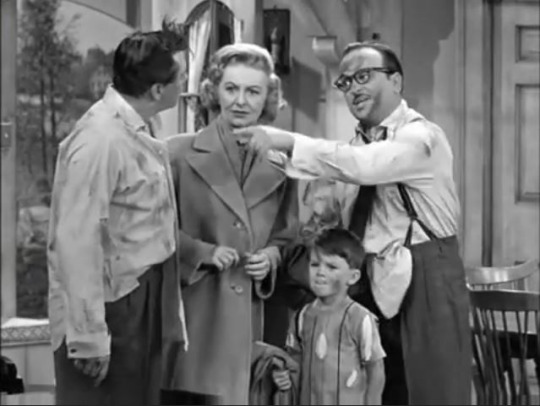
Ralph Ramsey ~ Father of Bruce Ramsey. The Ramseys live across from the Ricardos in Westport. Ralph (Frank Nelson) was only seen in two Connecticut-based episodes: “Lucy Gets Chummy With The Neighbors” (ILL S6;E18) and “The Country Club Dance” (ILL S6;E25), although Nelson appeared in many more episodes as different characters.

Danny Williams ~ Father of Rusty, Linda and Terry, although Terry does not appear in “Lucy Makes Room For Danny”, the cross-over episode that brought “The Danny Thomas Show” to CBS. In fact, for its first three years, the show was known as “Make Room for Daddy.” Subsequently, Thomas did a sequel called “Make Room for Granddaddy” and Lucille Ball guest-starred on it in 1971.

The Sheriff of Bent Fork, Tennessee ~ Father of twin girls Teensy and Weensy. Will Wright played the character in “Tennessee Bound” (ILL S4;E15).

Mr. Stanley ~ Father to nine girls! When “Lucy Goes To The Hospital” (ILL S2;E16), Ricky meets a man in the fathers’ waiting room (played by Charles Lane) anxiously awaiting the birth of his latest (and he says last) child, whom he hopes will be a boy. His hopes are dashed - times three over!
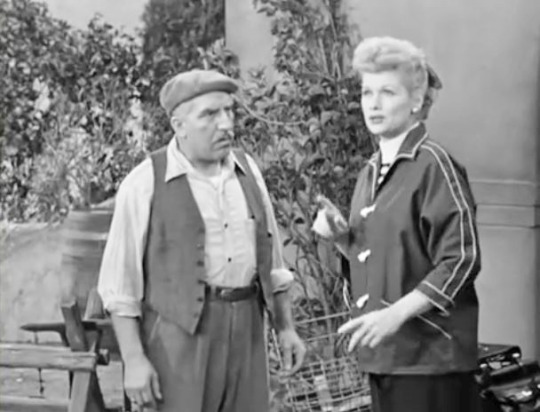
The Italian Farmer ~ in “Lucy’s Bicycle Trip” (ILL S5;E24), claims to have nine children: Teresa, Sofia, Luigi, Pietro, Dino, Gino, Rosa, Mario, and Antonio! The Farmer is played by Mario Siletti, but his "multi bambini” remain off screen!

Ernie Kovacs ~ Father of Kippie and Bette, unseen but mentioned characters in “Lucy Meets the Mustache” (LDCH S3;E3) in 1960. The girls are said to be making friends with Little Ricky, while their father entertains at Lucy and Ricky’s (last) party.
Moving on to the Fathers of “The Lucy Show”...

Theodore J. Mooney ~ Father of Bob, Ted, Arnold, and Rosemary, who was never seen, but is said to live in Trenton and to have had a baby, making Mr. Mooney a grandfather as well! Gale Gordon played Mr. Mooney from 1963 to 1968. If the character was ever given a spin-off, it might have been called “My Three Sons”!
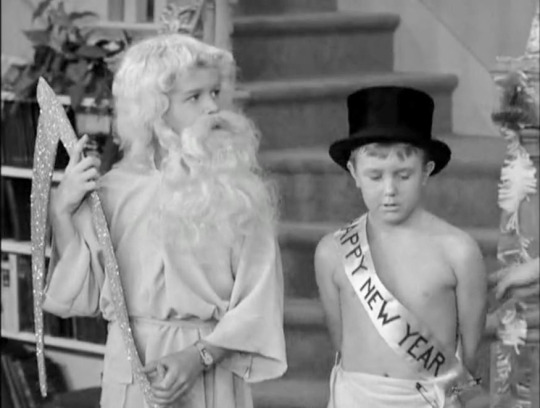
Father Time ~ Played by Sherman Bagley (Ralph Hart) in “Chris’s New Year’s Eve Party” (TLS S1;E14). He is accompanied by Baby New Year played by Jerry Carmichael (Jimmy Garrett). In the series, Sherman’s father Ralph is mentioned, but never seen. Jerry’s dad is deceased and never given a name.

Kenneth Westcott ~ Father of Debbie, who is a friend of Lucy Carmichael’s daughter Chris and Principal of their high school in 1963′s “Lucy is a Chaperone” (TLS S1;E27). He is played by Hanley Stafford.

Mr. Sanford ~ Father of Timmy, who is having a birthday where Lucy and Viv are hired as party planners and the entertainment in “Kiddie Parties, Inc.” (TLS S2;E2). Mr. Sanford is played by Lyle Talbot. If he was ever given a sequel, it might be called “Sanford and Son”!
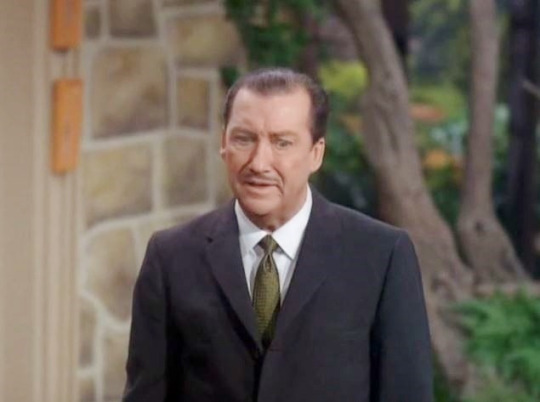
Jonathan Winslow ~ Father of Charlie, Danny and Bobbie (aka Roberta) in “Lucy the Babysitter” (TLS S5;E16). What Lucy doesn’t realize is that the Winslow children are actually baby chimps! Mr. Winslow was played by Jonathan Hole.
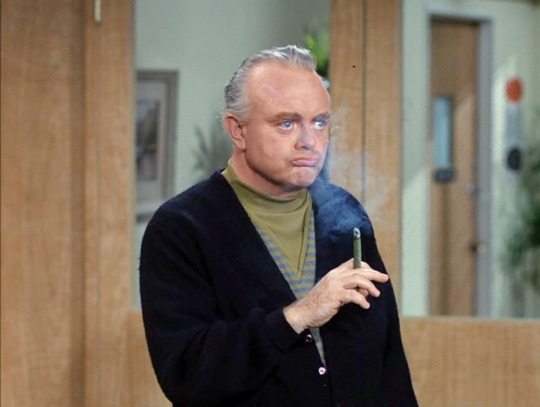
In “Lucy and Harry’s Tonsils” (TLS S2;E5), Mr. Phillips (Jack Collins) plays an father expecting his first child who believes Mr. Mooney is there for the same reason, while Mr. Mooney thinks Mr. Phillips is there for a tonsillectomy! Phillips (having his third child) is similar to the character of Mr. Stanley (who is having his ninth – all girls!) in “Lucy Goes to the Hospital” (ILL S2;E16).

“Lucy Becomes a Father” (TLS S3;E9) finds single mom and widow Lucy Carmichael trying to be both mother and father to her son, Jerry. She joins five other cub scout dads on a weekend away, trying desperately to do what the other dads do. The fathers include (left to right): Hal Smith as Mr. Wilson, George ‘Red’ Fox as George (hidden), Gale Gordon as Mr. Mooney, George Niese as Mr. Carter, and Buster West as Tom. Coincidentally, Gale Gordon had the surnames Carter in “Here’s Lucy” and Wilson in “Dennis the Menace” but neither were dads!
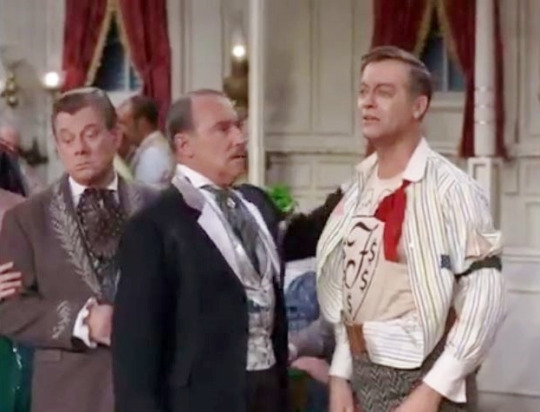
In the play “The Founding of Danfield” staged in “Lucy and Arthur Godfrey” (TLS S3;E23) in 1965, Godfrey plays “Daddy” of Lucybelle (Lucy Carmichael), and [spoiler alert] Conrad P. Field (Mr. Mooney) turns out to be the daddy of the Honest-But-Poor Piano Player Dan (Vinnie, played by Max Showalter). In real life, Godfrey was the father of three.
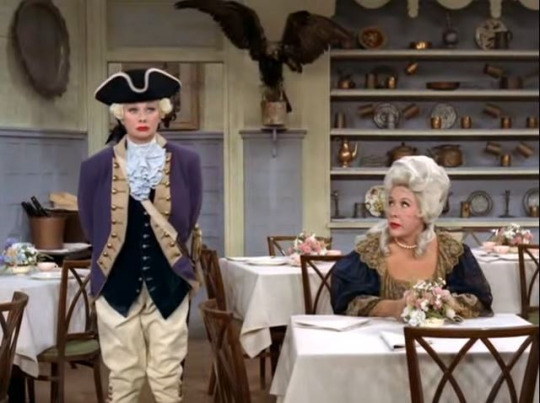
The Father of Our Country ~ George Washington, as embodied by Lucy Carmichael when “Lucy and Viv Open a Restaurant” (TLS S2;E20). Viv (Vivian Vance) dresses a George’s wife, Martha, to promote their new Colonial-themed restaurant.

In “Lucy the Gun Moll” (TLS S4;E25), Lucille Ball plays both Lucy Carmichael and a look-alike gun moll named Rusty, who performs the Cole Porter song “My Heart Belongs to Daddy”!
And now the Dads of “Here’s Lucy”....
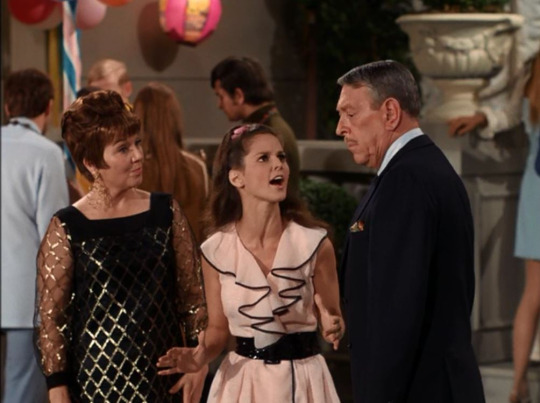
Mr. Caldwell ~ Father of Laurie in “Mod, Mod Lucy” (HL S1;E1), the very first episode of “Here’s Lucy.” Lew Parker played the over-protective dad of teenage Laurie (Nancy Roth). His wife is played by Nancy Howard. Parker was best known for playing the father of another TV character, Ann Marie (Marlo Thomas) on “That Girl.” In real-life, Marlo’s father was Lucy’s friend and co-star - one of the most famous daddies on TV - Danny Thomas!
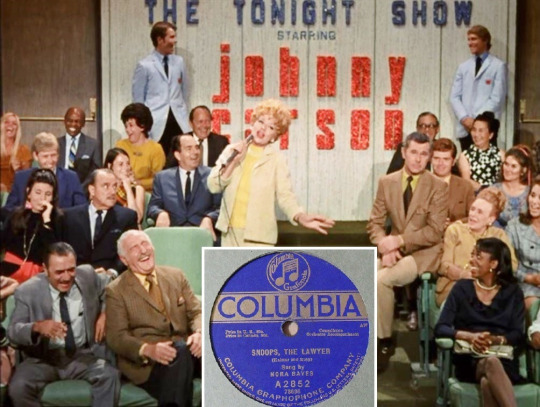
On “Lucy and Johnny Carson” (HL S2;E11), while appearing on “The Tonight Show” and playing Stump the Band, Lucy Carter chooses a song titled “Snoops the Lawyer” that she says her father sang to her when she was a child. This is the only mention of her father on the series. Coincidentally, Ball’s real mother is one of the audience members (Carson is sitting on the arm of her chair). Since the song was not written until 1920, and Lucille Ball’s real father Henry died in 1915, this cannot be a real-life recollection from Lucy.

Lee Wong ~ Father of Linda Chang and Sue Chin in “Lucy the Laundress” (HL S2;E17). The single father and business owner was played by James Hong.

Moose Manley ~ Father of milquetoast Wally in “Lucy and Wally Cox” (HL S2;E21). Moose was played by Alan Hale Jr. and his timid son by Wally Cox (insert).
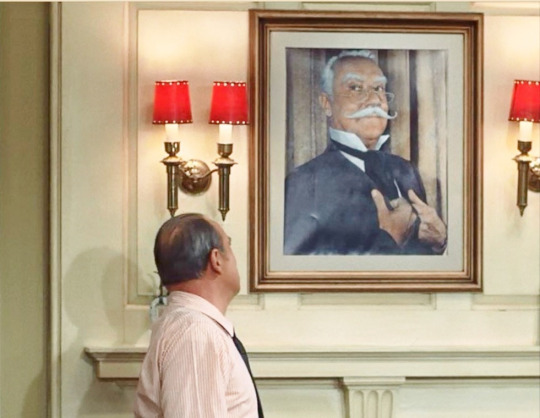
Harrison Otis Carter the First ~ Great Grandfather of Harry Carter IV (aka Harry). Gale Gordon’s image was used to create Harry’s great grandfather. Harry claims he was one of the founders of Sinclairville, New York, and was father of 17 children!
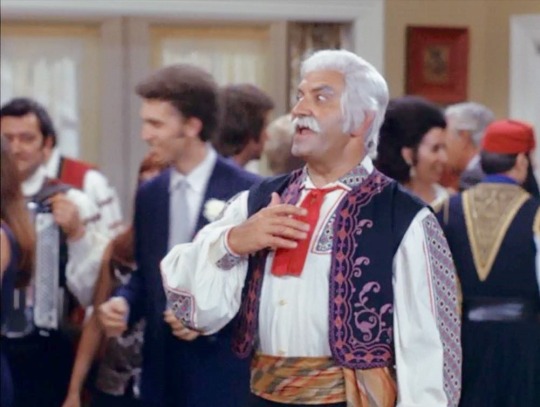
Konstantin Kasos ~ Grandfather of the Bride in “Lucy’s Wedding Party” (HL S3;E8). The role was played by Bruce Gordon (”The Untouchables”) who was really just 55 years old playing a 77 Greek granddaddy.

Vincent Price - Father of Victoria aka “Little Vicky”, the name of Price’s real-life daughter, who is mentioned by Lucy, but does not appear in the episode “Lucy Cuts Vincent’s Price” (HL S3;E9).

Alfredo Colucci ~ Father of Ricardo, Anna Maria, Louisa, Luigi, Vincenzo, Dino, Lucrezia, Alfredo Jr., Margarito, Bruno, Rosa, and Frederico - all of whom appear in the final moments of “Lucy and Harry’s Italian Bombshell” (HL S4;E3) starring Kaye Ballard. Emile Autuori plays Alfredo, but the twelve children appear uncredited.

Claude Wolff ~ Husband of Petula Clark, who was noticeably pregnant when they played themselves on a “Here’s Lucy” in 1972. In real-life, Wolff became a dad for the third time with the birth of his first son, Patrick.
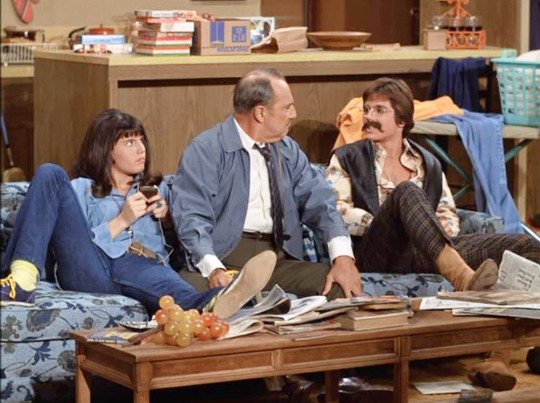
Harry Carter (Gale Gordon) finally got to play a working class dad to two unambitious teens when he appeared in a TV commercial during “Lucy and Cousin Ernie’s Fun Farm” (HL S1;E23) in 1969.

Harry Carter (Gale Gordon) pretends to be a husband and father (to be) when he convinces Lucy to play his pregnant wife to scare of a domineering suitor (Jean Willes) in “Lucy, The Part-Time Wife” (HL S3;E14).

The Lucyverse has plenty of room for fathers of all kinds. Father Lambros (Paul Picerni) showed up for a Greek wedding in “Lucy’s Wedding Party” (HL S3;E8).
And Finally, “Life With Lucy
All Lucy Fathers come back to Gale Gordon - a man who never had children in real life!

Curtis McGibbon ~ Father of Ted McGibbon and Grandfather of Ted’s children Rebecca and Kevin. Gale Gordon played Curtis, the patriarch on “Life With Lucy,” with Larry Anderson as Ted, Jenny Lewis as Becky, and Philip Amelio as Kevin.
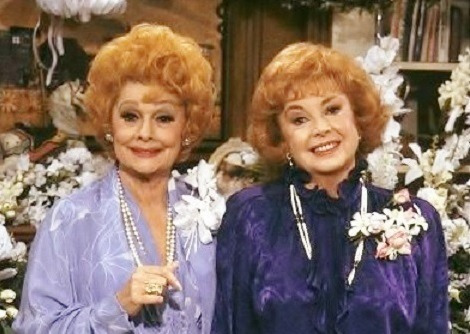
In “Mother of the Bride” (LWL S1;E8) in 1986, Lucy Barker and her sister Audrey (Audrey Meadows) mention their father during a private conversation in the kitchen.
#Lucille Ball#Fathers Day#Fathers#Dads#Daddies#Pops#Papa#i love lucy#the lucy show#Here's Lucy#Life With Lucy#Gale Gordon#desi arnaz
2 notes
·
View notes
Text
Shakespearean Stabbings, How to Feed a Dictator and Other New Books to Read
https://sciencespies.com/nature/shakespearean-stabbings-how-to-feed-a-dictator-and-other-new-books-to-read/
Shakespearean Stabbings, How to Feed a Dictator and Other New Books to Read

An estimated 74 heroes, villains and sidekicks featured in William Shakespeare’s writings meet unsavory onstage ends. Thirty of these men and women succumb to stabbing, according to a 2015 analysis by the Telegraph, while five die by beheading, four by poison, and three by both stabbing and poison. At the more unconventional end of the spectrum, causes of death range from grief to insomnia, indigestion, smothering, shame and being baked into a pie.
Kathryn Harkup’s Death By Shakespeare: Snakebites, Stabbings and Broken Hearts adopts a scientific approach to the Bard’s many methods of killing off characters. As the chemist-by-training writes in the book’s prologue, Shakespeare may not have understood the science behind the process of dying, but as a someone who lived at a time when death—in the form of public executions, pestilence, accidents and widespread violence—was an accepted aspect of everyday life, he certainly knew “what it looked, sounded and smelled like.”
The latest installment in our “Books of the Week” series, which launched in late March to support authors whose works have been overshadowed amid the COVID-19 pandemic, details the science behind Shakespeare, the golden age of aviation, women doctors of World War I, the meals enjoyed by five modern dictators and the history of the controversial Shroud of Turin.
Representing the fields of history, science, arts and culture, innovation, and travel, selections represent texts that piqued our curiosity with their new approaches to oft-discussed topics, elevation of overlooked stories and artful prose. We’ve linked to Amazon for your convenience, but be sure to check with your local bookstore to see if it supports social distancing-appropriate delivery or pickup measures, too.
Death By Shakespeare: Snakebites, Stabbings and Broken Hearts by Kathryn Harkup

The author of A Is for Arsenic and Making the Monster: The Science Behind Mary Shelley’s Frankenstein continues her macabre cultural musings with an immensely readable roundup of Shakespearean death. Looking beyond the literary implications of characters’ untimely passing, she explores the forces that shaped the Bard’s world and, subsequently, his writing.
Sixteenth-century London was a hotbed of disease, unsanitary living conditions, violence, political unrest and impoverishment. People of the period witnessed death firsthand, providing palliative care in sick friends’ and family members’ last moments, attending strangers’ public executions, or falling prey to misfortune themselves. Writes Harkup, “With limited effective medical treatments available, the grim reality of death, from even the most trivial of illnesses and infections, was well known, up close and in detail.” It is perhaps unsurprising, then, that all of Shakespeare’s plays reference disease in some capacity.
After establishing this sociopolitical context, Harkup delves into chapter-by-chapter analysis of specific characters’ causes of death, including infirmity, murder, war, plague, poison, emotion and bear attack. The author’s scholarly expertise (she completed two doctorate degrees in chemistry before shifting focus to science communication) is apparent in these chapters, which are peppered with rather clinical descriptions: In a section on King Lear, for instance, she mentions—and outlines in great detail—the “clear post-mortem differences between strangulation, suffocation and hanging.”
Death By Shakespeare is centrally concerned with how its eponymous subject’s environment influenced the fictional worlds he created. Combining historical events, scientific knowledge and theatrical carnage, the work is at its best when determining the accuracy of various killing methods: In other words, Harkup asks, how exactly did Juliet appear dead for 72 hours, and is death by snakebite as peaceful as Cleopatra claimed?
Empires of the Sky: Zeppelins, Airplanes, and Two Men’s Epic Duel to Rule the World by Alexander Rose
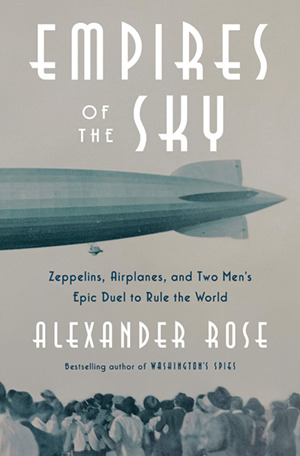
Today, most people’s knowledge of the zeppelin is limited to the 1937 Hindenburg disaster. But as historian Alexander Rose writes in Empires of the Sky, the German airship—invented by Count Ferdinand von Zeppelin at the turn of the 20th century—was once the world’s premiere form of air travel, easily outpacing its contemporary, the airplane.
The airship and airplane’s fight for dominance peaked in the 1920s and ’30s, when Zeppelin’s handpicked successor, Hugo Eckener, faced off with both the Wright Brothers and Pan American Airlines executive Juan Trippe. Per the book’s description, “At a time when America’s airplanes—rickety deathtraps held together by glue, screws, and luck—could barely make it from New York to Washington, Eckener’s airships serenely traversed oceans without a single crash, fatality, or injury.”
Though the zeppelin held the advantage in terms of safety, passenger satisfaction and reliability over long distances, the airplane enjoyed the benefit of sheer quantity, with the United States producing 3,010 civilian aircraft in 1936 alone. The Hindenburg, a state-of-the-art vessel poised to shift the debate in airships’ favor, ironically proved to be its downfall.
Detailing the aftermath of an October 9, 1936, meeting between American and German aviation executives, Rose writes, “Trippe … suspects the deal is done: America will soon be in the airship business and Zeppelin will duel with Pan American for mastery of the coming air empire.” Eckener, meanwhile, flew home on the Hindenburg in triumph, never guessing that his airship had “exactly seven months left to live.”
No Man’s Land: The Trailblazing Women Who Ran Britain’s Most Extraordinary Military Hospital During World War I by Wendy Moore

At the turn of the 20th century, the few female doctors active in Great Britain were largely limited to treating women and children. But when war broke out in 1914, surgeon Louisa Garrett Anderson and anesthesiologist Flora Murray flouted this convention, establishing a military hospital of their own in Paris and paving the way for other women doctors to similarly start treating male patients.
Housed in a repurposed hotel and funded by donations from friends, family and fellow suffragists, the pair’s hospital soon drew the attention of the British War Office, which asked Anderson and Murray to run a military hospital in London. As author Wendy Moore points out, this venue “was, and would remain, the only military hospital under the auspices of the British Army to be staffed solely by women doctors and run entirely by women.”
Tens of thousands of patients arrived at the hospital over the next four-and-a-half years, according to Kirkus’ review of No Man’s Land. Staff performed more than 7,000 surgeries, treating previously unseen ailments including the aftereffects of chlorine gas attacks and injuries inflicted by artillery and high-explosive shells. Though initially met with distaste by men who dismissed a hospital run by “mere women,” Anderson and Murray’s steadfast commitment to care managed to convince even their critics of women’s value as physicians.
In 1918, the flu pandemic arrived in London, overwhelming the pair’s Endell Street Military Hospital just as the war reached its final stages. Writes Moore, “Now that they found themselves fighting an invisible enemy, to no apparent purpose, they had reached the breaking point.”
The pandemic eventually passed, and as life returned to a semblance of normality, women doctors were once again relegated to the sidelines. Still, Sarah Lyall points out in the New York Times’ review of the book, the “tide had started to turn” in these medical professionals’ favor—in no small part due to the perseverance of Anderson and Murray.
How to Feed a Dictator: Saddam Hussein, Idi Amin, Enver Hoxha, Fidel Castro, and Pol Pot Through the Eyes of Their Cooks by Witold Szablowski
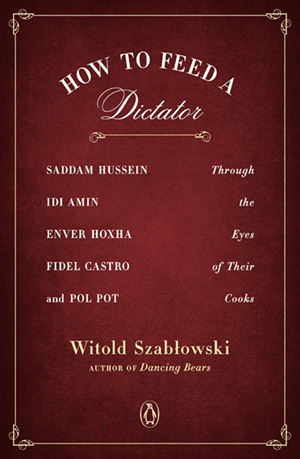
The favorite meals of five 20th-century dictators are more mundane than one might think. As Rose Prince writes in the Spectator’s review of Polish journalist Witold Szablowski’s How to Feed a Dictator, Saddam Hussein’s cuisine of choice was lentil soup and grilled fish. Idi Amin opted for steak-and-kidney pie complemented by a dessert of chocolate pudding, while Fidel Castro enjoyed “a simple dish of chicken and mango.” And though popular lore suggests Pol Pot dined on the hearts of cobras, the Cambodian dictator’s chef revealed that he actually preferred chicken and fish.
According to Szablowski, How to Feed a Dictator strives to present “a panorama of big social and political problems seen through the kitchen door.” But tracking down the personal chefs who kept these despots—Hussein, Amin, Castro, Pot and former Albanian prime minister Enver Hoxha—well-fed proved to be an understandably difficult task. Not only did Szablowski have to find men and women who didn’t particularly want to be found, but he also had to earn their trust and convince them to discuss traumatic chapters in their lives. Speaking with Publishers Weekly’s Louisa Ermelino, Szablowski notes that Amin’s, Hoxha’s and Hussein’s chefs were simply culinary professionals; Castro’s and Pot’s, on the other hand, started off as partisans.
Ultimately, the author tells NPR’s Lulu Garcia-Navarro, “Sometimes they are very easy to like, but sometimes they are very easy to hate. Like, they are not easy characters, because it wasn’t an easy job.”
The Holy Shroud: A Brilliant Hoax in the Time of the Black Death by Gary Vikan

Gary Vikan has spent some 35 years tracking down evidence refuting the Shroud of Turin’s authenticity. In The Holy Shroud, Vikan—former director of Baltimore’s Walters Art Museum and a respected art historian—outlines his findings, arguing that the controversial burial cloth belonged not to Jesus, but to a medieval artist employed by French monarch John II at the height of the Black Death.
“I knew right away that the Holy Shroud was the fake, for the simple reason that it does not fit into the chronology of Christian relics or iconography, and because it appears for the first time in the historical record in 14th century France,” wrote Vikan in a blog post earlier this year. “ … [W]ith the help of a brilliant scientist, I am [now] able to answer the questions of when, why, by whom, and how the Shroud was made.”
Per the book’s description, John II gifted the “photograph-like body print” to his friend Geoffroi de Charny shortly before the latter’s death at the Battle of Poitiers in 1356. Originally meant as an “innocuous devotional image” for the knight’s newly-built church, the cloth was soon reinvented as one of Christianity’s most significant relics.
“Miracles were faked,” says Vikan, “and money was made.”
#Nature
1 note
·
View note
Text
Download No Man's Land: The Trailblazing Women Who Ran Britain?s Most Extraordinary Military Hospital During World War I EBOOK -- Wendy Moore
No Man's Land: The Trailblazing Women Who Ran Britain?s Most Extraordinary Military Hospital During World War I - Wendy Moore
READ & DOWNLOAD Wendy Moore book No Man's Land: The Trailblazing Women Who Ran Britain?s Most Extraordinary Military Hospital During World War I in PDF, EPub, Mobi, Kindle online. Free book, AudioBook, Reender Book No Man's Land: The Trailblazing Women Who Ran Britain?s Most Extraordinary Military Hospital During World War I by Wendy Moore full book,full ebook full Download.
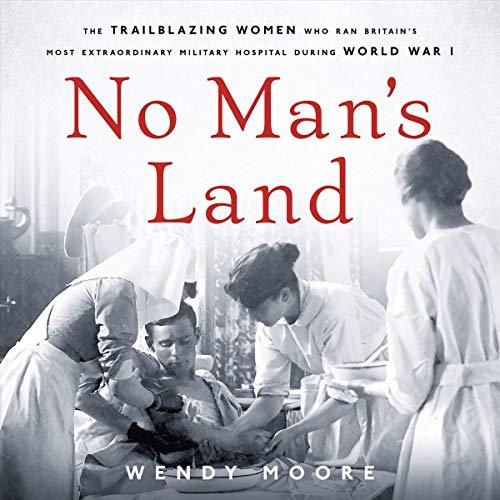
Read / Download No Man's Land: The Trailblazing Women Who Ran Britain?s Most Extraordinary Military Hospital During World War I
DESCRIPTION BOOK : Discover the true story of two pioneering suffragette doctors who transformed modern medicine, raised standards for patient care, and shattered social expectations for women in WWI-era London.A month after war broke out in 1914, doctors Flora Murray and Louisa Garrett Anderson set out for Paris, where they opened a hospital in a luxury hotel and treated hundreds of casualties plucked from France's battlefields. Although, prior to the war, female doctors were restricted to treating women and children, Flora and Louisa's work was so successful that the British Army asked them to set up a hospital in the heart of London. Nicknamed the Suffragettes' Hospital, Endell Street soon became known for its lifesaving treatments and lively atmosphere.
DETAIL BOOK :
Author : Wendy Moore
Pages : 368 pages
Publisher : Basic Books
Language : eng
ISBN-10 : B086LK2QNJ
ISBN-13 :
Supporting format: PDF, EPUB, Kindle, Audio, MOBI, HTML, RTF, TXT, etc.
Supporting : PC, Android, Apple, Ipad, Iphone, etc.
================*================
Tag the PDF - No Man's Land: The Trailblazing Women Who Ran Britain?s Most Extraordinary Military Hospital During World War I by Wendy Moore Ebook PDF - No Man's Land: The Trailblazing Women Who Ran Britain?s Most Extraordinary Military Hospital During World War I by Wendy Moore PDF Download - No Man's Land: The Trailblazing Women Who Ran Britain?s Most Extraordinary Military Hospital During World War I by Wendy Moore EPUB - No Man's Land: The Trailblazing Women Who Ran Britain?s Most Extraordinary Military Hospital During World War I by Wendy Moore EBOOK - No Man's Land: The Trailblazing Women Who Ran Britain?s Most Extraordinary Military Hospital During World War I by Wendy Moore PDF Online - No Man's Land: The Trailblazing Women Who Ran Britain?s Most Extraordinary Military Hospital During World War I by Wendy Moore E-BOOK Online - No Man's Land: The Trailblazing Women Who Ran Britain?s Most Extraordinary Military Hospital During World War I by Wendy Moore PDF Free - No Man's Land: The Trailblazing Women Who Ran Britain?s Most Extraordinary Military Hospital During World War I by Wendy Moore ebook library - No Man's Land: The Trailblazing Women Who Ran Britain?s Most Extraordinary Military Hospital During World War I by Wendy Moore pdf document - No Man's Land: The Trailblazing Women Who Ran Britain?s Most Extraordinary Military Hospital During World War I by Wendy Moore pdf reader - No Man's Land: The Trailblazing Women Who Ran Britain?s Most Extraordinary Military Hospital During World War I by Wendy Moore ebook creator - No Man's Land: The Trailblazing Women Who Ran Britain?s Most Extraordinary Military Hospital During World War I by Wendy Moore ebook deals - No Man's Land: The Trailblazing Women Who Ran Britain?s Most Extraordinary Military Hospital During World War I by Wendy Moore ebook kindle - Ebook PDF No Man's Land: The Trailblazing Women Who Ran Britain?s Most Extraordinary Military Hospital During World War I by Wendy Moore - PDF Download No Man's Land: The Trailblazing Women Who Ran Britain?s Most Extraordinary Military Hospital During World War I by Wendy Moore - EPUB No Man's Land: The Trailblazing Women Who Ran Britain?s Most Extraordinary Military Hospital During World War I by Wendy Moore - EBOOK No Man's Land: The Trailblazing Women Who Ran Britain?s Most Extraordinary Military Hospital During World War I by Wendy Moore - PDF Online No Man's Land: The Trailblazing Women Who Ran Britain?s Most Extraordinary Military Hospital During World War I by Wendy Moore - E-BOOK Online No Man's Land: The Trailblazing Women Who Ran Britain?s Most Extraordinary Military Hospital During World War I by Wendy Moore - PDF Free No Man's Land: The Trailblazing Women Who Ran Britain?s Most Extraordinary Military Hospital During World War I by Wendy Moore - ebook library No Man's Land: The Trailblazing Women Who Ran Britain?s Most Extraordinary Military Hospital During World War I by Wendy Moore - pdf document No Man's Land: The Trailblazing Women Who Ran Britain?s Most Extraordinary Military Hospital During World War I by Wendy Moore - pdf reader No Man's Land: The Trailblazing Women Who Ran Britain?s Most Extraordinary Military Hospital During World War I by Wendy Moore - ebook creator No Man's Land: The Trailblazing Women Who Ran Britain?s Most Extraordinary Military Hospital During World War I by Wendy Moore - ebook deals No Man's Land: The Trailblazing Women Who Ran Britain?s Most Extraordinary Military Hospital During World War I by Wendy Moore - ebook kindle No Man's Land: The Trailblazing Women Who Ran Britain?s Most Extraordinary Military Hospital During World War I by Wendy Moore
0 notes
Text
Ilaria Tuti "Come vento cucito alla terra", presentazione
Ilaria Tuti “Come vento cucito alla terra”, presentazione
La vicenda si apre a Londra nel quartiere di Witechapel alla data 21 agosto 1914: Cate, “la dottoressa italiana” sta suturando una ferita sul volto di una giovane prostituta in un bordello dei sobborghi della città ed è qui che Flora Murray, anestesista e fisiatra, e Louisa Garrett Anderson, chirurgo, si presenteranno e la inviteranno ad unirsi alla squadra “composta da otto infermiere, quattro…

View On WordPress
0 notes
Photo
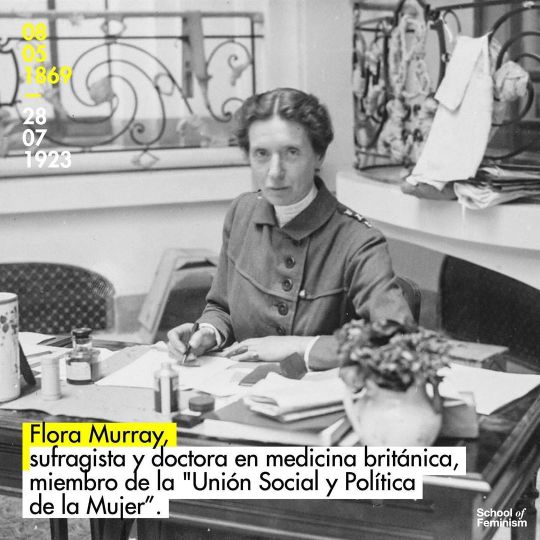
#Herstory #UnDiaComoHoy
#FloraMurray (Murraythwaite, Escocia, 8 de mayo de 1869 – 28 de julio de 1923) fue una #doctora en #medicina británica, miembro de la "Unión Social y Política de la Mujer". Hija de John Murray y Grace Harriet Graham. Asistió a la Escuela de Medicina para Mujeres en Londres y finalizó sus estudios en la Universidad de Durham. Trabajó algunos años en Escocia antes de regresar a Londres. En 1905 Murray fue oficial médica en el hospital para niños de Belgrave, y luego se desempeñó como anestesista en el Hospital para Mujeres de Chelsea. Se unió a la "Unión Social y Política de la Mujer" en 1908, desempeñando sus oficios médicos entre los militantes. Fue oradora, marchó en manifestaciones y realizó pruebas de primeros auxilios entre los sufragistas, acompañada de Emmeline Pankhurst y otras huelguistas luego de su salida de prisión. En 1912 fundó el Hospital de Mujeres para Niños, en 688 Harrow Road, con la doctora Louisa Garrett Anderson. Proveía servicios de salud a los niños de escasos recursos del área, y le dio oportunidad a las doctoras mujeres de ganar experiencia en pedatría. En la Primera Guerra Mundial sirvió en Francia con el Cuerpo Hospital de Mujeres. Junto a su pareja, la Dra. Louisa Garrett Anderson, estableció hospitales militares para el ejército francés en París y Wimereux. Sus propósitos al principio fueron denegados por el ejército británico, pero eventualmente se le permitió continuar con su labor. Sus restos yacen en la Iglesia de la Santísima Trinidad junto a los de su colega Louisa Garrett Anderson en Penn, Buckinghamshire. Wikipedia #efemérides #cientificas #mujeresyciencia #womeninscience #schooloffeminism #educarenigualdad #educarenfeminismo https://www.instagram.com/p/CdTIAXJjlus/?igshid=NGJjMDIxMWI=
#herstory#undiacomohoy#floramurray#doctora#medicina#efemérides#cientificas#mujeresyciencia#womeninscience#schooloffeminism#educarenigualdad#educarenfeminismo
0 notes
Text
Doctor Louisa Garrett Anderson was one of the first people awarded which Order of the British Empire in 1917?
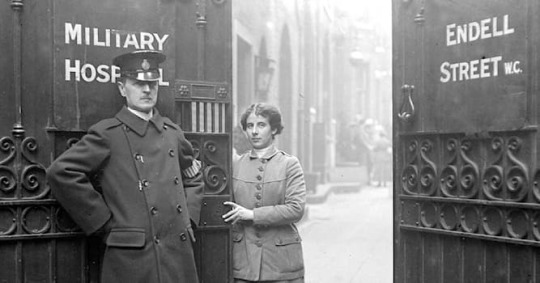
In 1917, King George V founded the Order of the British Empire to honour those who served in non-combatant roles during the First World War. The Order consists of five classes: Knight/Dame Grand Cross (GBE), Knight/Dame Commander (KBE/DBE), Commander (CBE), Officer (OBE), and Member (MBE). For their medical work in the Endell Street Military Hospital (ESMH), Louisa Garrett Anderson and her partner, Flora Murray, became one of the first people awarded a CBE in August 1917.
Born on 28th July 1873 in Aldeburgh, Suffolk, Louisa was the eldest child of Elizabeth Garrett Anderson, the first female doctor in Britain. During the First World War, Anderson and Murray founded the Women's Hospital Corps (WHC), which they equipped with female staff. They were later invited by the War Office to run the newly built ESMH in London.
Initially, the ESMH opened with enough beds for 520 men, but the number of wounded continued to grow, forcing them to squeeze in another 53 beds. Additional Voluntary Aid Detachment (VAD) hospitals were established to allow doctors and nurses to treat up to 800 wounded soldiers at a time.
The ESMH saw 50,000 patients between 1915 and 1919, with 80 soldiers arriving each day. Anderson and the other surgeons conducted around 20 operations per day. The majority of staff were women, including drivers, dentists, pathologists, doctors, surgeons and nurses.
Anderson died from cancer on 15th November 1943 at the age of 70.
0 notes
Photo

Flora Murray (deceased)
Gender: Female
Sexuality: Lesbian
DOB: 8 May 1869
RIP: 28 July 1923
Ethnicity: White - Scottish
Occupation: Doctor, nurse, suffragette
Note 1: In 1912 she founded the Women’s Hospital for Children with her partner Louisa Garrett Anderson. It provided health care for working-class children of the area, and gave women doctors their only opportunity to gain clinical experience in pediatrics in London
Note 2: When WW1 broke out, Murray and Dr Louisa Garrett Anderson founded the Women’s Hospital Corps (WHC), and recruited women to staff it. Murray reported in her diary that visiting representatives of the British War Office were astonished to find a hospital run successfully by British women, and the hospital was soon treated as a British auxiliary hospital rather than a French one.
#Flora Murray#lgbt history#lesbian history#lgbt#lgbtq#female#lesbian#1869#rip#historical#white#scottish#doctor#nurse#suffragette#activist#popular#popular post
132 notes
·
View notes
Photo
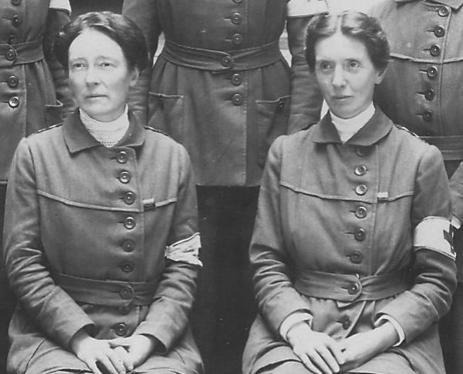
Louisa Garrett Anderson (L) and Fiona Murray (R) both trained at the London School of Medicine for Women (LSMW).
Women’s Hospital Corps (WHC) had begun to take shape. Pulling on their contacts within the suffrage movement and beyond, Murray and Garrett Anderson managed to raise over £2000 (about £160,000 today) and pull together the people, equipment and supplies to fully equip their hospital.
Both the WHC’s name and the uniforms they designed for their staff clearly demonstrated their determination to run the hospital as if it were part of British Army in all but reality.
5 notes
·
View notes
Photo

El hospital de las sufragistas: una historia de doctoras pioneras en la I Guerra Mundial
El punto de partida de esta historia real ya serviría como garantía para que décadas después la convirtiesen en un libro, uno de esos ensayos sobre personas interesantes y sobre pioneras en la lucha por los derechos de la mujer que resultan tan interesantes.
Louisa Garrett Anderson era una de las hijas de la primera mujer que logró que las autoridades médicas británicas reconociesen su título en Medicina y que pudo ejercer como doctora en el país. Como su madre, Anderson también estudió Medicina y también trabajó en ese campo. A diferencia de su madre, no quiso centrarse en el tipo de trabajo médico que se consideraba adecuado para una mujer (ginecología o pediatría) y se convirtió en cirujana. Fue pionera en ese campo, como lo fue la mujer con la que compartiría tanto su trayectoria profesional como su vida, Flora Murray, que era anestesista. Ambas eran, antes del estallido de la I Guerra Mundial, pioneras en sus campos, feministas comprometidas y activistas por el sufragio femenino.
Pero entones estalló la I Guerra Mundial y la historia de Louisa Garrett Anderson y Flora Murray empezó un nuevo capítulo, otro más que no solo es clave en su historia como profesionales de la medicina sino también en la de la lucha por los derechos de la mujer y por demostrar las capacidades de las profesionales (especialmente en aquellos campos que habían dominado históricamente los hombres).
Anderson y Murray acabarían en el frente de batalla, responsables de un hospital de guerra (o, mejor dicho, de varios hospitales de guerra) que sería referencia del buen trabajo y de los buenos resultados. Lo harían con un personal mayoritariamente femenino (lo era en su totalidad en los puestos claves, como el cuerpo médico y el de enfermeras, los hombres eran una minoría que ocupaba algunos puestos de celadores), a pesar de que, por supuesto, cuando estalló la guerra las autoridades militares no querían tener nada que ver con ellas.
La historia de ese hospital, el trabajo de Anderson y Murray y el papel que jugaron en él las diferentes mujeres –profesionales de la medicina o voluntarias que se alistaron en medio de la guerra– es la base de No Man’s Land, de Wendy Moore, publicado por Perseus Books. El libro apareció en abril, pero la historia de estas mujeres no debe quedarse difuminada por culpa de la pandemia y perdida entre las novedades que salieron en un momento complicado y no tuvieron oportunidad de brillar.
Cuando estalló la guerra, Anderson y Murray, como escribe Moore, “sabían que la guerra con Alemania suponía una amenaza terrorífica para Gran Bretaña, pero también que ofrecía una oportunidad única en la vida para las mujeres”. Aunque desde que la madre de Louisa Garrett Anderson, Elizabeth, había logrado que confirmasen su título y ejercer como médica habían cambiado las cosas, la posición de las mujeres en la profesión médica seguía siendo poco positiva. Existían muchas más mujeres doctoras, pero todavía las principales universidades seguían rechazándolas como estudiantes.
También tenían problemas para acceder a puestos médicos. Los hospitales seguían dando prioridad a los hombres o directamente negándoles la entrada a las doctoras. A las mujeres, además, se las confinaba en áreas que eran consideradas “femeninas”. Por ello, las doctoras acababan siendo sobre todo ginecólogas o especialistas en niños, por mucho que lo fuesen en múltiples áreas.
Incluso cuando tenían formaciones y capacidades equivalentes a las de sus homólogos hombres en áreas que ellos dominaban, no tenían más remedio que acabar trabajando con mujeres y niños si querían trabajar. Anderson, cirujana, y Murray, anestesista, lo hacían en hospitales para mujeres y niños.
Lo que cambió la guerra
La guerra cambió todo eso. No en un primer momento, pero sí a medida que el avance del conflicto hacía imposible que los médicos cubriesen todas las necesidades tanto de la población general como de la población militar. Cuando en un primer momento las profesionales médicas británicas decidieron sumarse al esfuerzo bélico y ofrecerse como profesionales al cuerpo sanitario militar, fueron desdeñadas.
En ese contexto, Anderson y Murray decidieron ofrecer, saltándose al ejército británico, sus servicios a la Embajada francesa (Francia era el campo de batalla, al fin y al cabo). No lograron mucho, pero tampoco les cerraron la puerta del todo. Simplemente las mandaron a hablar con la Cruz Roja. Y la Cruz Roja les dio dos semanas para organizarse y conseguir fondos (que lograron gracias a su entorno de amigos y familia y a la capacidad de recolección de fondos de las sufragistas) para montar un hospital de campaña.
Lo hicieron en ese mismo verano de 1914, partiendo a Francia con su equipo de mujeres, vestidas con un elegante uniforme que Anderson y Murray diseñaron pensando no solo en que fuera cómodo para el trabajo sino también que las dotase de un cierto aire militar. La ropa funcionaba como una carta de presentación y como una vía para lograr se respetadas (y en París era considerado muy chic, lo que les acabó abriendo puertas).
“Murray y Anderson vestían bandas sufragistas moradas, blancas y verde en el frente de sus túnicas con orgullo”, añade además la biógrafa. De hecho, sus conexiones con el movimiento hacían que fuese conocido como el hospital de las sufragistas.
El equipo de estas dos mujeres organizó rápidamente un hospital en un hotel de París, que empezó a recibir heridos del frente. Cuando las líneas de batalla cambiaron, el hospital se movió para estar mucho más pegado a los campos de batalla y lograr así ser más eficiente. Su trabajo en esos primeros meses en París y en los campos de batalla franceses acabaría cambiando su destino durante los años de la guerra.
Un hospital modelo
En el medio del caos de la guerra, el hospital de las sufragistas funcionaba de forma eficiente y efectiva, incluso aunque en un primer momento ninguna de ellas estaba preparada para lo que se les venía encima (pero como explica Moore tampoco lo estaba el cuerpo sanitario del ejército británico). En su primera operación con un soldado recién llegado del frente, “las dos mujeres sabían que el fracaso no era una opción”, escribe la historiadora. “Esa noche era una prueba crítica, no solo sobre ellas mismas sino de todas las mujeres doctoras”. Anderson acabaría operando ese verano durante horas, llegando en algunas jornadas a las 15 horas y no bajando de una media de 7 a 8 diarias.
Como ocurría con los demás hospitales, estaban expuestas a recibir visitas de inspección que controlaban cómo trabajaban y qué hacían. La primera de esas inspecciones cambiaría la suerte del hospital de las sufragistas.
Su trabajo fue inspeccionado por el responsable del cuerpo médico británico, que llegó hasta ellas (como podría ser el giro de trama de una película) esperando lo peor y salió convertido en un defensor del trabajo médico de estas profesionales. La visita lo dejó convencido de que el hospital de las sufragistas era “un hospital militar modelo y sus mujeres doctoras iguales a cualquier médico hombre”. De hecho, después de pasar por los dos hospitales que estas mujeres montaron en Francia, les ofrecieron hacerse cargo de uno de los hospitales militares que se estaban montando en Londres. Y, aunque ellas no eran las únicas mujeres trabajando en el campo sanitario durante la I Guerra Mundial, sí se convirtieron en “las primeras mujeres doctoras en ser formalmente autorizadas a gestionar un hospital militar en la armada británica”.
Su hospital en Endell Street, en la capital británica, se convertiría en un choque cultural para los soldados, que llegaban a un espacio en el que mandaban las mujeres y en el que todo lo hacían ellas, pero que también servía para familiarizarlos con el trabajo femenino y para verlas como expertas. Para las mujeres que trabajaban allí, el hospital ofrecía oportunidades insólitas en trabajo, investigación y avance de la carrera profesional, al menos durante los años que duró la guerra y los momentos posteriores (el hospital siguió operando un poco más allá y sirvió incluso durante la epidemia de gripe).
Las mujeres del hospital de las sufragistas demostraron la capacidad de las profesionales y fueron una prueba empírica contra los clichés de su tiempo. Las mujeres que trabajaban allí eran plenamente conscientes de ello. No solo tenían que hacer un trabajo clave, sino que debían demostrar que eran buenas en ello porque no se las juzgaría únicamente a ellas como trabajadoras sino que sus acciones se verían como un ejemplo de cómo eran las mujeres como profesionales sanitarias.
Además, durante la guerra, se necesitó aumentar el cuerpo médico, para cubrir no solo lo que ocurría en el frente (a donde se mandó a los hombres doctores) sino también lo que pasaba en la retaguardia (para donde no había profesionales suficientes), por lo que se alentó la entrada de las mujeres en el cuerpo sanitario. Ser médica se presentaba como una opción de trabajo perfecta para las mujeres (sí, a pesar de todo lo que se decía antes de la guerra) y el hospital de las sufragistas era el ejemplo perfecto que empleaban los medios para mostrarlo.
Lo que pasó tras la guerra
Cuando acabó la guerra, eso sí, el papel de estas mujeres, como las de todas las profesionales que trabajaron durante la guerra, se convirtió en problemático para el establishment. “No solo fueron las mujeres castigadas por robar los trabajos de los hombres, sino que también sus contribuciones durante el tiempo de guerra fueron infravaloradas y trivializadas”, explica Moore en su libro. “En el impulso por borrar los peores recuerdos de la guerra, los hombres querían que las mujeres volviesen a sus roles domésticos previos a la guerra y a su comportamiento sumiso”, añade.
Del todo no lo lograron. Los años 20 fueron años de liberación y emancipación de la mujer y supusieron una oleada de libertad y cambios sociales a muchos niveles y de un modo bastante general en Europa.
Pero, por mucho que no se cumplieran exactamente sus objetivos, el día después estuvo lejos de ser perfecto. Estas doctoras, enfermeras y trabajadoras que hicieron tanto en tiempos de guerra tuvieron que contentarse, en general, con las migajas del trabajo sanitario en los tiempos de paz, cuando no directamente acabaron casándose y dejando el trabajo (lo que se esperaba de ellas con los códigos tradicionales) o vieron como las escuelas médicas que habían abierto sus puertas a las mujeres durante los años de guerra las cerraban nuevamente para centrarse solo en los hombres. “No es sorprendente que muchas mujeres sanitarias mirasen atrás a sus servicios de tiempos de guerra como el momento más feliz de sus vidas”, apunta Moore.
Y, por supuesto, aunque no lograsen del todo mandarlas de vuelta a las posiciones que ocupaban antes de la guerra, el mundo post-I Guerra Mundial sí difuminó su memoria. Las convirtió en notas al pie o en personajes ni siquiera secundarios sino más bien de los que hacen bulto en la historia de lo que pasó durante esos años. No hay más que pensar en todas esas películas heroicas sobre la guerra y el papel que tienen las mujeres en ellas.
Fotografía | Mujeres trabajando en el hospital londinense, colección London School of Economics (vía)
The post El hospital de las sufragistas: una historia de doctoras pioneras en la I Guerra Mundial appeared first on Librópatas.
https://ift.tt/30Andz0
0 notes
Text
Fiona and Alaya :: Book I, II, III, IV ...
Dr. Flora Murray and Dr. Louisa Garrett Anderson's paper was made available to the public November 2033 fifty years after the Silurians rejoined humankind to the surface of the earth. Here are excerpts from "Homo-Reptilia and Homo-Sapien Reproduction: a Case Study 1892 - 1907" [stored in Torchwood Archives]:
"
Prenatal exam found the birth mother's human blood has been infused, by the fetus, with Silurian blood to ensure a proper hybrid birth.
Human birth mother and fetus developed hyperactive heartbeats above 70 bpm for the first three months.
Birth mother c/o hard nipples, feeling cold and it was observed that her fingernails grew 12 mm per month.
Fetus' gestation period was seven months.
The birth was traumatic for the human mother as the birthing canal isn't suited to pass a Silurian crown. Stitches were needed to make sure of postpartum perineal healing. None of the mother's organs were affected. The amniotic sac was thicker and had to be removed with a surgical scissor from the newborn. It is our hypothesis that the membrane was produced naturally for internal organ protection against damage from Silurian crown and scales.
The Silurian/Human newborn weight 3.5 kilograms, length 36.3 centimeters.
Human mother's traits transferred to neonate include: pink skin color, brown eye color, presence of fingernails and navel from umbilical cord.
Silurian mother's traits transferred to neonate include: body covered in pink reptilian scales, green reptilian scales on the posterior skull, shoulders, and lower body. The neonate exhibited a Silurian tongue.
The neonate's optic system adapted by flickering between an outer eyelid and nictitating membrane as the round pupils dilate and constrict until the eyes have fully adjusted. Tiny pink scaled hands curled around Doctor Murray's finger as she attempted to swaddle the neonate into a small yellow quilt. It was observed, once bound, a three-inch Silurian tongue flickered, examining the world for the first time while seeking out for its mothers and instantly winds around Doctor's Murray's thumb.
"
Read more at https://www.fanfiction.net/u/5785727/000000robot
#vastra x jenny#madame vastra#jenny#jennyflint#doctor who#lesbian#fanfic#althistory#vastra and jenny#jenny and vastra
10 notes
·
View notes